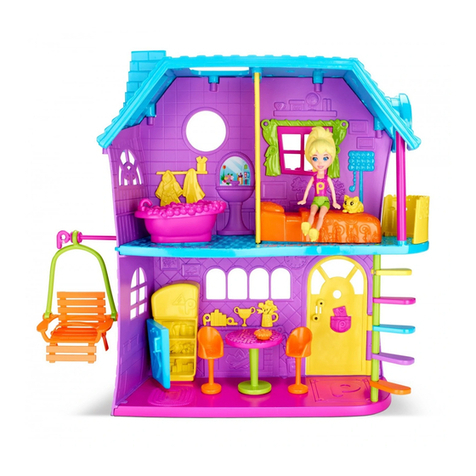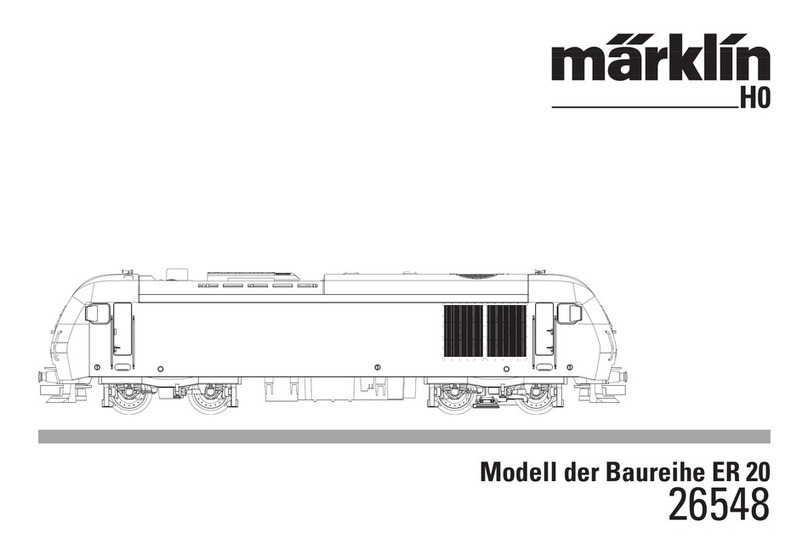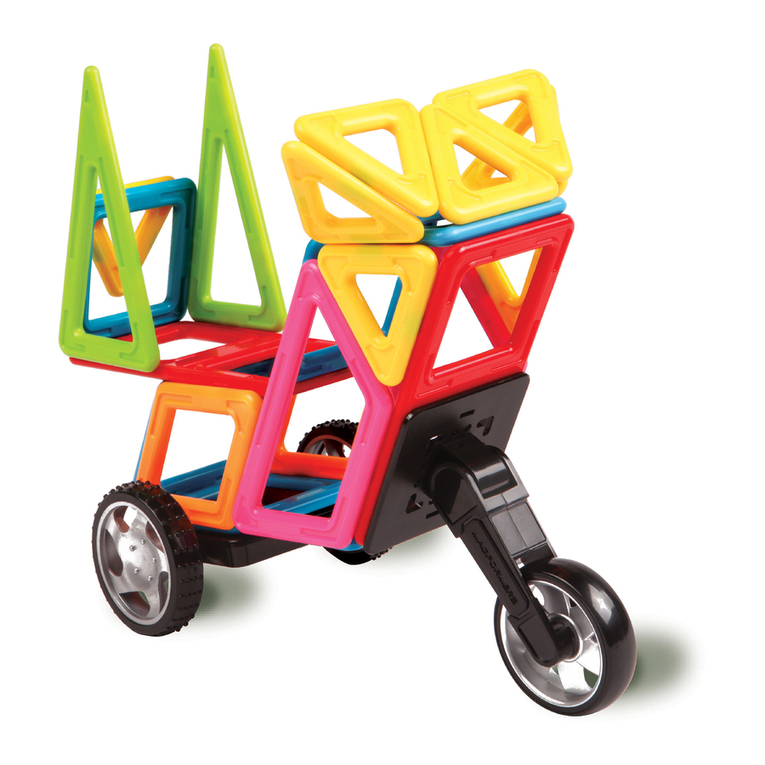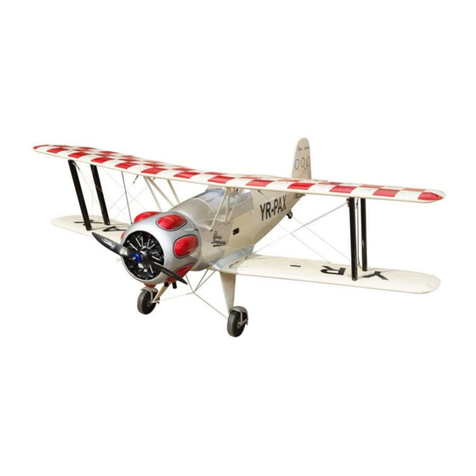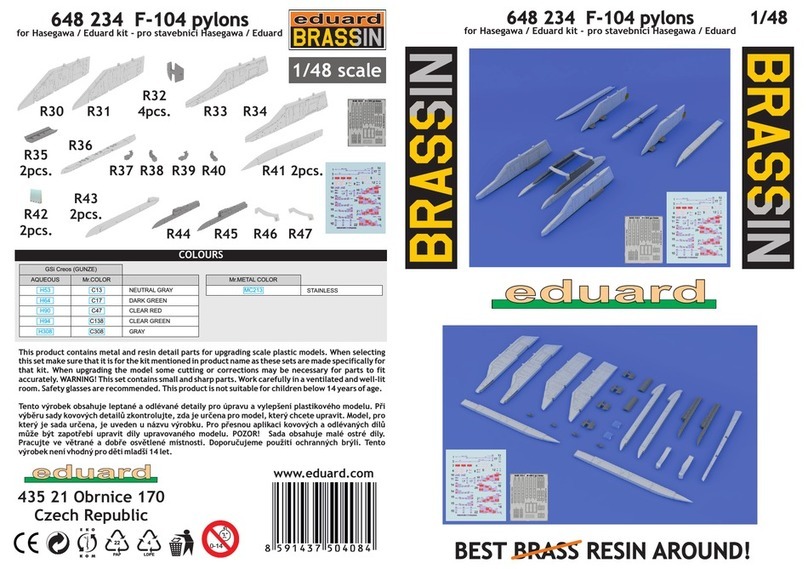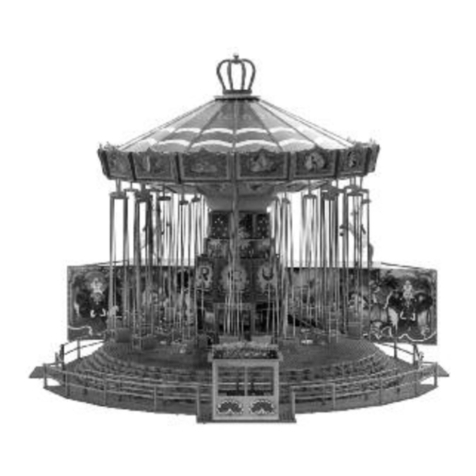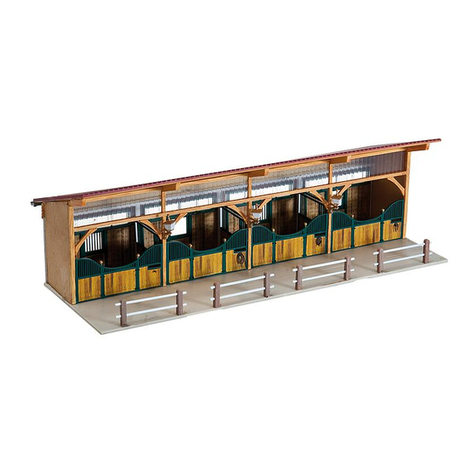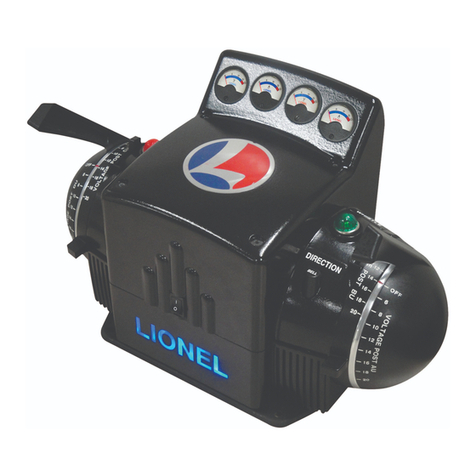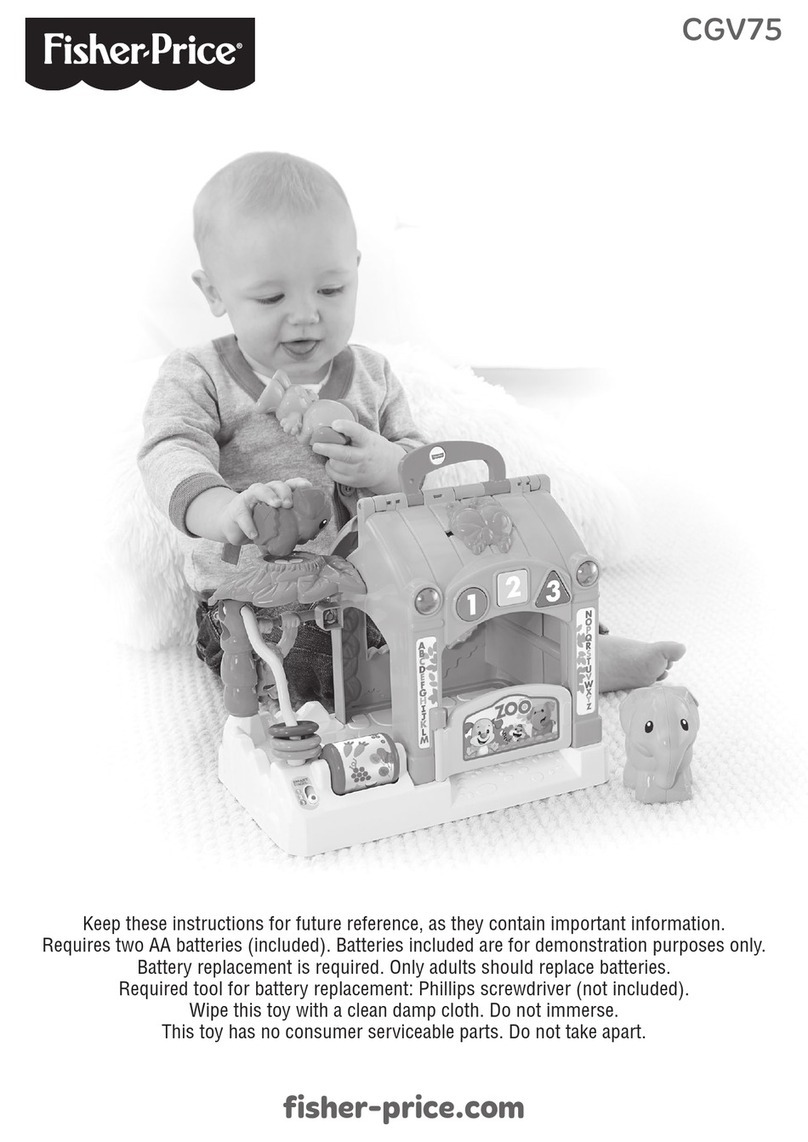DD ArrowV5 User manual

Assembly manual
Congradulations on your purchase of Donatas Design, aeromusical plane Arrow V.5. This plane is
evolution of famous 4D trainer with variable pitch propeller placed inside fuselage. Arrow V5 is
latest version of this plane, that is extremely good choice if you want to learn 3D ore 4D flying.
Plane kit come in two versions regular and milled. Regular version is preffered option for
beginers, and pilots that plan to fly Arrow outside in light winds. Not milled version is also
stronger. Milled kit is made for competition pilots and flyng with Variable Pitch propeller. Milling
save about 9 grams, and as we know weight and wingloading is very important factor in F3P
competition planes.
Arrow V.5 is intendet to be powered by 18,5g AXI2203/RACE motor and 2s light lypo battery if you
fly indoor. If you plan to fly outdoor AXI 2204/54 with 3s light lypo is recommended. Please have in
mind if you sellect more powerfull motor aditional reinforcements to airframe will be necessary.
This kit include all items that are necessary to finish kit, depron parts, carbon rods, flat
carbon, hi quality fiberglass hardware set, motormount, Z ends for servo attachment, velcro
tapefor battery fixation and pull pull line.
Equipment selection
Motor: AXI2203/Race (For indoor flying, motor weight 18,5g. )
AXI 2205/54 (For outdoor flying in light wind, motor weight 25,9g.)
AXI 2205/54 EVP (VPP flying, motor weight 25,9g ).
ESC: Competition option Castle Creation Phoenix 10a , budget version CC Thunderbird 9.
Battery: Desire Power V8, 35C 300mah, 2S/7,4V , battery weight 16g. (Light indoor)
Desire Power V8, 35C 380mah, 2S/7,4V , battery weight 22g. (Powerfull indoor)
Desire Power V8, 35C 380mah, 3S/11.1V , battery weight 30g. (Powerfull outdoor or VPP)
Servos: Dig. JR 290G single servo for elevator and rudder, 2 servos can be ussed on ailerons.
Dig. JR 188 single servo for elevator or rudder, 2 servos can be ussed on ailerons.
Hitec 65hb single servo on ailerons and rudder
Radio: At least 4 ch programmable radio with minimum programming of exponential. My advice
would be more advanced radio like JR 9 or JR11 that have travel adjustment, dual rates, trim steps,
digital trimmers, mixes and other useful functions, that will help you setup plane fast for best
performance.
Receiver : As light as possible, i use with great sucess: Spectrum 2,4ghz Ar6300 2g.
Duplex 2.4ghz R6Gindoor 3.6g
1

2
Here you can see fiberglass hardware set. It is done to achieve best control of your moving
surfaces. Now you can use long servo arms and servo horns, this will allow you to have less
pressure on control rod and also use full potential of your servos and not lose resolution. Also
few small piece will reinforce areas that face allot of forces.

You will need just few basic tools and materials to
finish your Arrow V.5:
Sharp hobby knife, file ,1.5mm dril, piece of
sanding paper, scizors, screwdriver, solder,
Donatas Design beveling tool.
Mercury Adhesives foam friendly CA glues
(M100F), Mercury Adhesives Accelerator MH 16
M3 medical tape for control surface attachment.
Building:
Using sharp knife split fuselage.Do not throw derpon "trash" (servo cutout holes). For example if
you decide to use two aileron servos you can glue back inside fuselage this small piece and avoid
having ugly hole.
3
Required tools and adhesives:
Make sure you remove all steps
that were connecting fuselage.
Repeat this procedure for all parts.
If you try to build plane light, here is one trick. „Shave“,
end’s of 0,5mm flat carbon. You will save some weight
and will have very useful thin carbon for further building.
Next thing is reinforcing some critical parts.
Here you can see aileron compensator
reinforcement with thin carbon.
Ussing Donatas Design beveling tool cut
aileron edge, for easy deflection down (when
it is attached to wing), and great clean look .

4
Glue 0.5mm carbon on back and leading edges of the wing. Carbon lenght required for back edge
is 70cm, for front we will need 83cm carbon lenght should be. Very end of carbon is fixed with
small piece of medical blenderm tape.
Optional reinforcement: Glue thin carbon (that is left from „shaving“ main carbon spar ) like shown
in picture, this give very good strenght for elevator and prevent stabilizer part from cracking.
When flat carbon is glued to wing, and aileron edges are beveled, its time to attach these two parts
together. I highly recommend to use 3M medical blenderm tape, it stick extremely well to depron
surface. Also this tape is not shiny so it does not stand out and change colour sheme of the plane.
In picture on right you can see black circles, these are areas where small pieces of blenderm tape
must be placed. Reinforcement here prevent aileron from moving away from wing, after many
hours of flying.

5
There are few ways how you can attach elevator and rudder. Easier one is to use Donatas Design
beveling tool and cut control surface by angle, and then ussing blenderm tape attach it to fuselage
(same way ailerons are done).Such method is good when you use solid pull push system. But if
you use pull pull cables, tension on hinge line will displace rudder or elevator.
When you use TVR (Trust Vector Control) system, it put allot forces on motormount and nose of
plane, here is small trick how to make nose of plane stronger and have less noise. Cut nose about
3cm from front and glue in thin carbon piece. This will help in few areas, plane nose will be much
stronger and noise will caused by hi G maneuvers will be smaller.
I use so called „8" method.
You can see rudder here is connected like old fashion control line
surfaces, when people did not had hi quality hinges. Idea here is simple, take two pieces of
blenderm tape (about 1x1,5cm size). Glue 0,5cm lenght of tape to other tape to sticky areas, this
will give you 2,5cm tape that is sticky in front on the bottom and rear on the top, at same time center
is neutral from both sides. Having such piece glue one side of it to stabilizer top surface and
bottom of elevator, reply same thing just flip over next sticky tape piece. You have to repeat this
procedure until elevator is connected from left to right. Such way of connecting surfaces is best
for Pull pull cbles. I use this method on my competition models, it allow surface deflect up to 180
degree with no effort, also it can withstand pull pull cable tension forces and stay in place for ever.

6
Now its time for one of most important steps durring building of your Arrow V5. Place tail section to
main wing as shown. Use some heavy objects to lock parts on flat table. Measure very carefully
distance from each wingtip to stabilizer, it must be exactly the same. Also be sure tap line where
bottom of fuselage will be connected is in one line.
In this stage of building last part you must attach is front of the plane. Glue it as it is shown in
picture on the left. Make sure tap line (line where bottom fuselage will be connected) is straigt and
it match line on tail section and wings.
In picture on the right side you can see one more aditional reinforcement for top part of fuselage.
Ussing sharp knife carefully cut as shown in picture. Best way is to stick to outline of cockpit, so
carbon reinforcement will not stand out.
Area behind wing where it is connected to fuselage is weak point of every shockflyer. I recommend
to reinforce it with fiberglass cloth. Cut small piece as shown in picture and put few drops of foam
friendly CA glue. Make sure it spread even, so all material is wet, but be sure not to clean all axtra
CA with paper towel, remember we don’t want extra weight. And to much of CA glue is one area
where you can collect weight very quickly. For example for building your plane take fresh bottle of
CA glue, and check what is the weight of it. When you finish building your plane put bottle of CA to
scale you will see how much weight you add to your plane in form of a glue.

7
Glue flat thin carbon piece as shown in
picture. This will reinforce top of fuselage and
in case of inverted landing will help to protect
depron from bending.
Cut holles for V shape carbon reinforcement.
This is necessary step to ensure both sides of
elevator deflect ecactly the same. Otherwise
elevator controll will be not precise.
Glue bottom part of fuselage inverted on the
flat table. Put some heawy objects on tail and
wings, this will help to keep them straight. It is
very important for precise flying plane.
Now lets reinforce bootom fuselage structure
by adding 1mm carbon rods. Be sure to take a
piece of sanding paper and prepare surface
of each tip of carbon rod. This way glues will
stick better. For easy setup i recommend use
some square helfull tools like CD cover ore
credit/phone card. Take two exact same sice
objects that have 90 degree angle, place
these objects (my favorite credit cards ) from
both sides. This way depron stay straight.
On last picture, you can see all construction
reinforced and already assembled in one
piece. Such reinforcement way is about 50%
lighter than old fashion depron box, that also
had some twist during rolls.

8
Now we need to prepare main wing support. Here you can see reinforcement piece made from
0.5mm fiberglass. In your Arrow kit you will find similar detail, glue it in center of wing on
bottom of fuselage.
Mark 23 cm distance (measuring from fuselage towards wingtip). This will be point where
wing support from 1.5mm will be connected. Wing support carbon rod must be 26 cm long.
Also don’t forget to use credit card to make sure fuselage is always stand by 90 degree angle.
DO NOT GLUE 4 carbon rods in center yet. First you need to attach them to flat carbon that is
glued to leading and back edge of main wing.
Glue four carbon rods to main wing, and as shown using needle and kevlar thread make
couple loops around carbon spar and flat carbon. This will give amazing strenght when you
will place drop of foam friendly CA glues on top. This update will keep wings in same position
no matter how hard you will fly your plane.

Now when kevlar thread is in place and carbon rods are already glued in place put plane again
on flat table. Use some weights to press it down to table. Now double check vertical fuselage
position and apply some CA glue in center of fuselage.
Now you can glue two support SFG’s from depron to wing support carbon rod.
This is optional aileron reinforcement .
control become little more precise. For milled version of Arrow this is highly
recommended. But if you have regular Arrow version and don't have time skills to do this
upgrade, its not necessary. Your Arrow will fly just fine.
This upgrade make ailerons much stronger and roll 9

Carbon structure from different angle.
When all updates are installed, make sure elevator is flat and deflect easy to both sides.
Now it is good time to glue in flat carbon pieces to V shape openning we cut earlier. When you glue
flat carbon inside depron, glue fiberglass square plate on top and bottom of elevator as shown in
picture. Same optional reinforcement update with carbon can be done on milled elevator. For
Wing reinforcement I use 1mm carbon rods and for elevator I use 0.7mm carbon rod ( 0.7mm
carbon does not come with kit).
When all updates are installed, make sure aileron is flat and deflect easy to both sides. 10

11
While we did not attach top of fuselage, now it is good
time to prepare and install landing gear. First of all i like
to reinforce stresfull areas near landing gear. For this
task i use some 6 cm piece of thin carbon and fiberglass
cloth. Now lets prepare and mount landing gear. Take 24
cm long 1,5mm diameter carbon rod. Mount it as it is
shown in picture, with small angle toward engine. This
will provide stable standing on the ground. I also highly
recommend to take kevlar threat and nedle, and repeat
same procedure like we did with main wing support. Tie
1,5 mm carbon rod to leading edge flat carbon.
Now it is time to decide how many servos you will use for ailerons. Arrow V.5 have really big and
powerfull ailerons, so it require strong servos. Single servo option would be Hitec 65HB
connected to 6 volts. (Do not try dirrect connection to 2S battery, eventually will burn after ~50
flights.) If you want to use two servos, i recommend JR290G ore Jr188. Jr290 is heavier option,
but it have better gears that will stay tight for hundrets of flights. In other hand JR188 is lighter.
All these servos are good quality but they all are quite heawy, but this is not a problem, here is
example how i cut down weight from Hitec 65HB servo. Screws and bottom case removed.
Rest servo parts hold together thanks to blenderm tape. Please have in mind that
such modiffications will void warranty from servo manufacturer.

12
If you decide to use single servo, glue servo in, and after that glue top of fuselage as shown.
Cut holle for aileron horn as shown. Try to do it exactly same on both ailerons. Next picture show
aileron servo arm , Take original servo arm and put it on servo trim and sub trim on your radio must
be 0. When you make such setup on your radio, glue fiberglass servo arm to plastic servo arm,
now you have perfect center and dont lose resolution when you try to achieve maximal equal
deflection to both sides. Next to the servo arm you can see Z bend, this is part included in kit and it
work just fine for regular use. On my competition planes i try to have perfect setup in each detail.
To achieve control linkage without slope (play), i use tiny ball links from Trex-250 helicopter. I learn
this trick from top USA pilot and builder Devin McGrath. Ball links are not included in kit, so if you
want this upgrade you can purchase it by yourself. I buy mine from Horizon Hobby.
H e r e y o u c a n s e e
pushrod connected to
servo arm. It is ready for
final adjustment and
attachment to aileron
control horn. This is
difficult part because
there is no god way to
adjust lenght of pushrod,
so you have to measure
few times to be sure it will
be right size.
I use top holle on servo horn and on servo arm i use second from side.

13
If you decide to use double servo, glue holle in wing front. And prepare location for servos, cut servo
size hole in both SFG’s as shown. Having two aileron servos will require little more work to setup but
in my opinion it worth time spending time, because you will receive few obvious advantages. First it
will be much easier to place battery where ever you want. And our goal is to place all equipment as
best as we can to achieve right center of gravity without battery. In this case we can cut holle above
center of gravity and this way we can use different size and weight batteries without changing CG.
Second advantage of double servo is ability to have flaps. Flaps/elevator mix can give some unique
and crazy maneuvers. And last but not least when you use two servos for ailerons control horn is
located in middle of aileron so end of aileron does not twist that much.
Fiberglass cloth is ussed to reinforce are where
control horn will be located. Try to have short
carbon rod and precise attachment of servo to
aileron with no play. Picture show ball link
connected to first version of hardware. Same as
with single servo there are two options ofr
connection of carbon rod to horn. You can use Z
bends, ore option that i recommend to buy by
yourself (Trex 250 ball links.)
NOTE: Hardware is picture is slightly different
from one you receive in kit.
Now it’s time to prepare elevator servo. Here is example how you can save wight on Jr290 G, again
bolts of servo case is removed, same as plastic bottom part. Beffore making this change use hi
quality tape (my favorite is 3D blenderm tape) to locktip servo cases together. You can cut down
weight to 7,4g, and that is very good weight for such level digital servo. This JR servo have very
goodset of gears that provide long life time, and no play for many flights. I use and recommend this
servo for both elevator and rudder control.
Here you can see servo arm prepared for
elevator pull pull. I take original servo arm
from Jr290, cut 50mm x 1,5mm carbon rod and
glue it to servo arm. Same as with aileron
servo before gluing carbon rod to servo arm
first i put 0 sub trim and trim on my radio.This
way you will have same traveling to both
sides.

14
Here you can see 40mm x 1.5mm carbon
rod installed to elevator. It must be
exactly same lenght on both sides.
Cable that is providet with kit will work
fine, but same as with ball links i preffere
to use slightly different material for my
competition models. I use 5KG fishing
line, and on top of the line i wind kevlar
threat. Togetheer they provite extremely
good control with no „spring effect“ ,
also tension stay the same no matter
what weather you have.
Last surface left to do is rudder. Same as with elevator i recommend to use pull pull system to
control it. Same ass with elevator i recommend “8" hinging method. In order to have smooth
movement, ussing sanding paper make edge of elevator round. Also very important upgrade for
rudder strenght and long life is piece of thin flat carbon going from compensator to middle of
Ussing foam friendly CA glues attach triangle piece to rudder as shown in picture. Make sure
triangle piece is „connected“ to reinforcement carbon. Latter glue in 45mm x1,5mm carbon rod, in
the holle close to bending edge, make sure distance on both sides is equal.

15
Very end of connection is done with stronger fiberglass tape. Also i put soft velcro on point where
tail will be touching ground, this will remove noise durring take off and landing.
Next step will be motor mounting. If you decide to go with regular motormount, this process will be
very easy, you can use wooden ore fiberglass motormount. Take your motor drill holles and ussing
few screws attach motor to motormount. Now you can glue motormount with motor to plane nose.
There should be 1-2 degree offset to right side and 0 in vertycal axis. If you will need to change angle
after few testflights, i recomment unscrew motor and and place small piece of glow fuel line betwen
motormount and motor.
When you glue wooden ore fiberglass motormount to depron nose, i recommend to
use 4 pieces of blenderm tape and put it on top of each „motormount leg“.

16
Optional: For more advanced pilots i would recommend to try to called TV (Trust vector control)
system. This mean motor will be moving to sides mixed ore connected ro rudder. Such upgrade will
allow you to make some crazy maneuvers. Here you can see construction of such system. I use ball
links connected to motor for smoth and noise free system. Please have in mind that ussualy motor
wirres do not hold constant bending. Please wind wirres as shown in picture, this way much more
flexible wirre from Castle Creation Phoenix 10A esc will be bending. I had none problems so far with
such mounting of wirres.
Depron cut out for motor with TVR system. AXI2203/Race motor, view from front.
Here you can see motor
already installed in place. TV
system add allot of forces to
motormount area, so as you
can see i use fiberglas clot to
increase strenght in this
place. Also you can see
Castle Creation controller
ready for final instalation.
Mount Controller about 5cm
from motormount. Move
engine full way to left and
only then attach ESC, this
will allow wirres be without
tension.

17
Here you can see exact dimensions for each side connection. Notice there are two ways to control
TV, with same servo as you use for rudder ore with separate servo. Ussing one servo will save you
weight, but TV willrequire powerfull servo such as JR 290G ore Hitec 65hb. If you gonna use one
servo pull pull cables must be crossed in one side of the plane, otherwise motor will move to
oposite dirrection than rudder, and there will be no benefit. Motor and rudder must move to same
possition. If you use two servos you will need to mix rud to TV controlling servo. This way it will b
eeasier to make precise setup of engine angle. Also you will be able to fly plane as with and without
engine movement.
Last step in your plane assembly is also very important. Here you can see my personal setting on
my JR9X radio. Sp far we did building as best as we could to keep plane straight and strong, now
its time to use one feature of radio that will help you to have precise flying plane. Many pilots do not
pay so much attention to triming of plane. Beffore each flight in competition i make short flight just
to be sure plane fly straight and perfect. For this i ned to have precise trims. Arrow surfaces are
really big, and you need to make trim steps as small as possible. Original setup in radio is for 4
steps on each trim click, this is to much for precise adjustments. Here you can see i put trim step to
lowest number possible, one click of trim mean just one step in servo movement.
Last step in your plane assembly is also very important. Here you can see my personal setting on
my JR9X radio. Arrow very easy and neutral flying airplane, therefore no mixes are necessary. I just
put thr curve to 90 percents, to limit amp draw. I have to do this because i use slightly to big
propeller (GWS 8x4,3) than AXI recommends for AXI2203/Race motor.

18
Here you can see dual rate and exponential setup for all surfaces. I use full deflection of all
surfaces all the time, and therefore i preffere more expo’s. For competition flying 2 minutes
aeromusical routine goes by very fast and durring two minutes switching flight modes for
different control surface deflection would be not wise. However when you fly for fun, it is quite
interesting to set up low rates and fly plane outside in light wind conditions. It is very interesting
to see how agile plane like Arrow can perform some IMAC/F3A type of flying.
Table of contents
